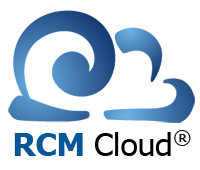Compliments of Health Management Technology.
Instead of fighting for the same pool of patients, hospital systems are growing bigger by merging—but they need to focus on streamlining and being more efficient after such transactions, Derrick Walker, senior director at Optum Advisory Services, said at HFMA’s Annual Conference.
His session, “A Glimpse into the Revenue Cycle of the Future,” addressed practices that hospitals must abide by to generate optimum revenue in the evolving landscape of mergers and acquisitions (M&A).
Hospital M&A has been on the rise in recent years as payment rates have diminished and the Affordable Care Act has spurred healthcare systems to find more ways to generate revenue and go after every dollar owed them—whether from payers or from patient portions of bills.
Bigger players such as Catholic Health Initiatives, Ascension, Dignity Health, and Northwell Health are buying smaller systems, and like-minded systems are merging to get bigger footprints, he said.
To accelerate cash flow via improved revenue collection after a merger, it’s important to cut redundancies and maximize economies of scale, Walker said.
Whereas revenue cycles had been local, the larger systems are transitioning to regionalized centers for excellence that serve hospitals in the group, Walker said. Those centers also contract out their services to other facilities, handling their receivables and generating more income, he said.
This setup enhances margin performance by modernizing the claims process and ensuring greater predictability of payment, Walker said. At the same time, it reduces costs by eliminating inefficiencies in the process.
Yet merged systems face talent-related challenges because it’s typically difficult to find qualified people to run rural facilities, Walker said. Those systems also sometimes falter because they fail to do due diligence to confirm potential revenue from an acquisition before deals. And they can be further hampered if hospitals run on different host systems, Walker said.
To avoid these pitfalls, the practice needs to be integrated, standardized, and centralized across the service centers, he said, with hospitals clustered into service groups by payer type and with uniform levels of service from group to group.
Other Key Takeaways
- As a system expands, the parties must be aware of the need to elevate the quality of healthcare services rendered to minority and underserved communities. A system that expands into a new geographic area through acquisition needs to make sure services for the underserved are available there.
- Analytics are needed to drive results and good decision making across the entire revenue system in a new landscape.
- A leadership team must be strong enough to manage across markets and regions, given that minute differences in efficiency can mean major changes in revenue outcomes.
We hope you find the information we provide to be beneficial in your efforts to streamline processes and maximize your revenue cycle efficiency and results.
Stockell Healthcare Systems
(The Revenue Cycle Division of Medsphere Systems Corp)
866.386.6057 / sales@stockell.com
www.rcmcloud.com
